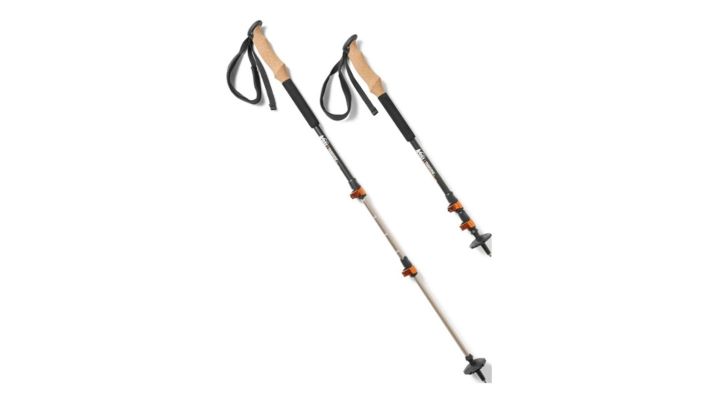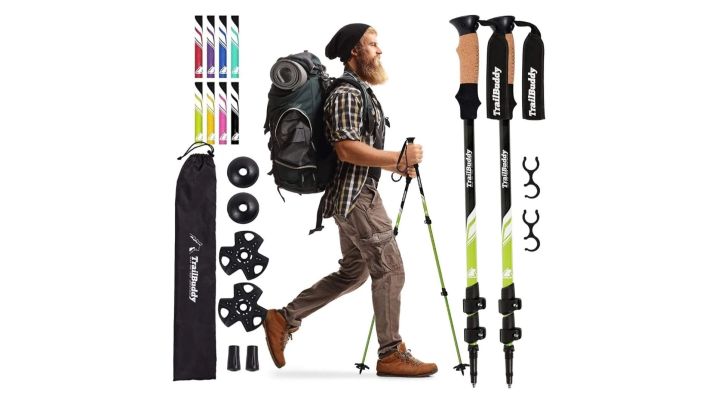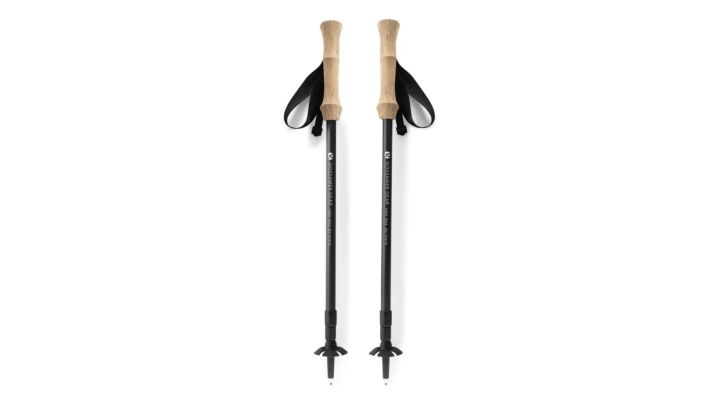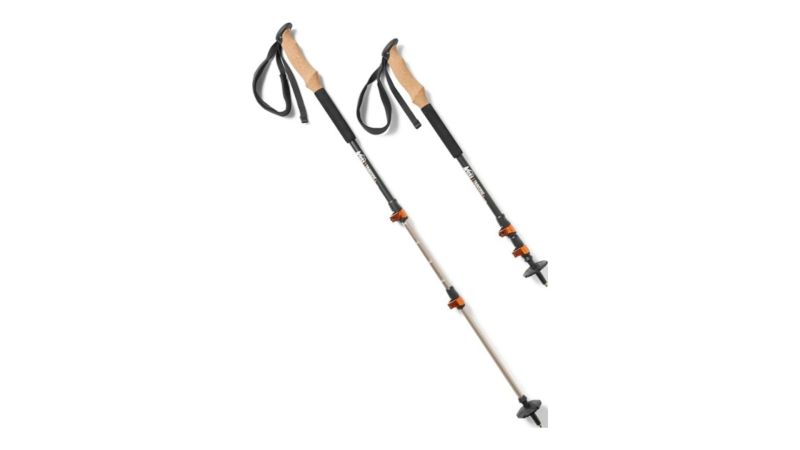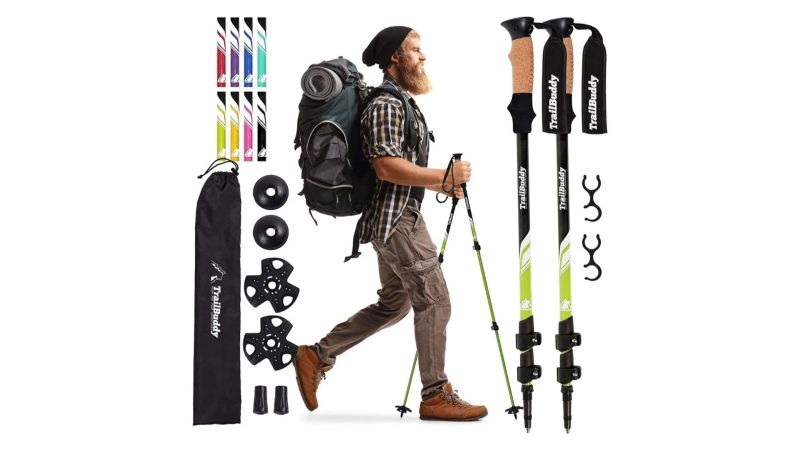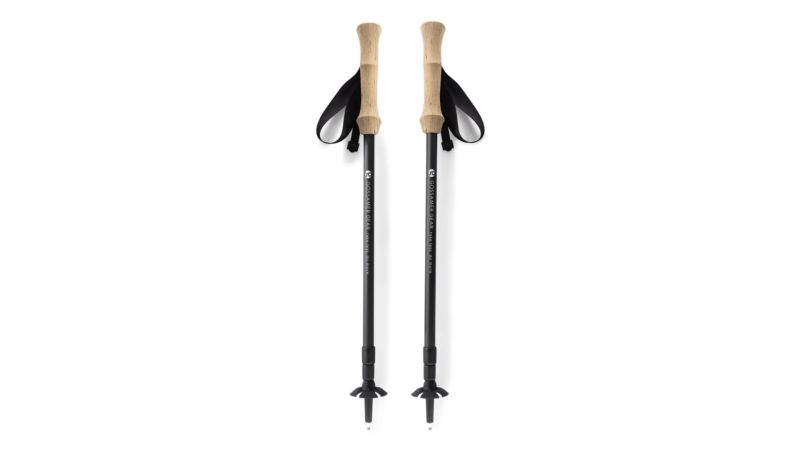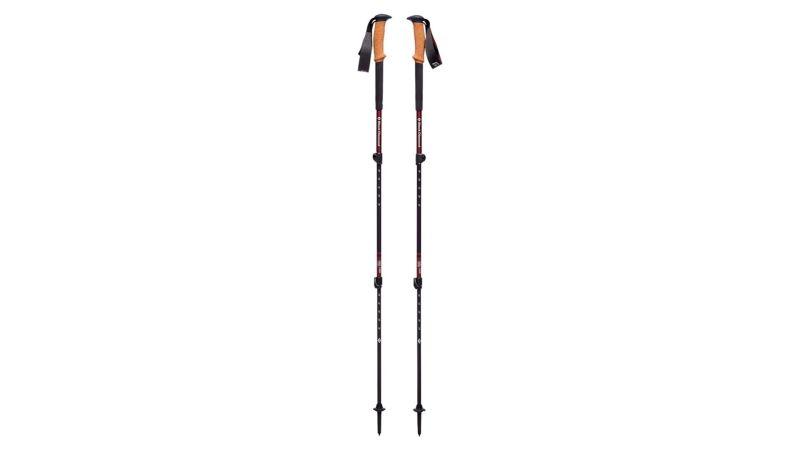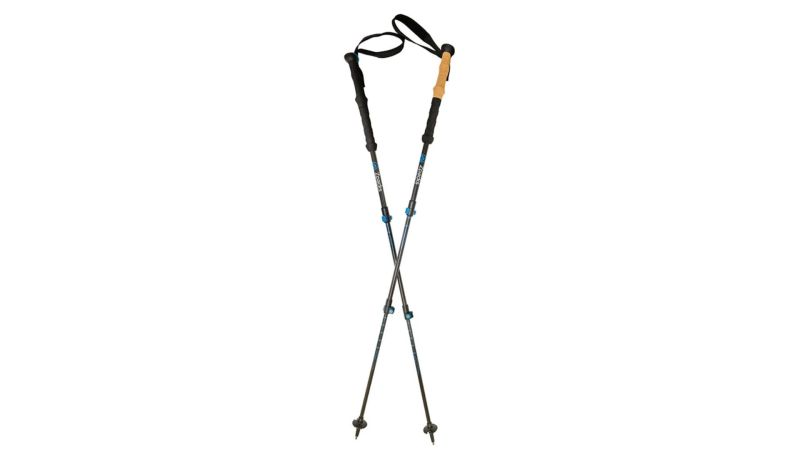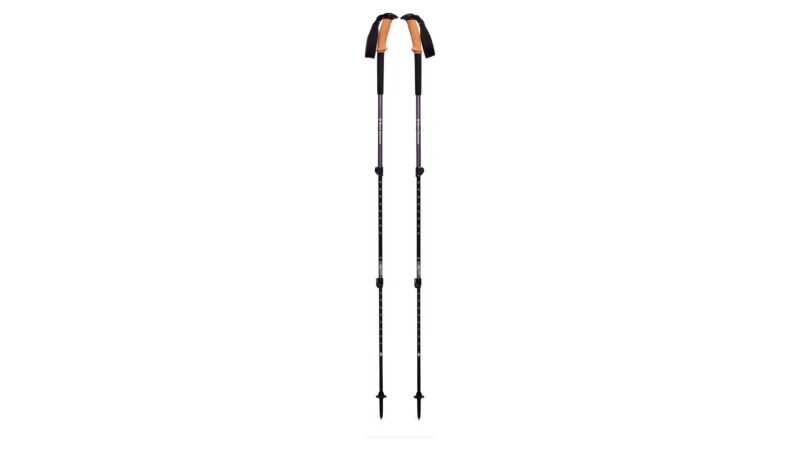We may earn revenue from the products available on this page and participate in affiliate programs.

If you’ve ever watched a four-legged critter scamper over terrain that would give a triathlete pause, then you know the benefits of a four-paw drive. Trekking poles provide us ungainly bipeds with many of the same capabilities, allowing hikers and backpackers to confidently and quickly move uphill and downhill through boulder-strewn crags and slippery river fords.
In this article, we’ll show you how to select the best trekking poles to upgrade your hike. Let’s get started.
- Best Overall: REI Traverse
- Best Budget: TrailBuddy Trekking Poles
- Editor’s Choice: Gossamer Gear LT5
- Best for Women: Black Diamond Trail Cork
- Best for Backpacking: Zpacks Ultralight Carbon Fiber
- Best for Hiking: Black Diamond Trail Ergo Cork
Best Overall
REI Traverse
Best Budget
TrailBuddy Trekking Poles
Best Ultralight
Gossamer Gear LT5
Best for Women
Black Diamond Trail Cork
est for Backpacking
Zpacks Ultralight Carbon Fiber
Best for Hiking
Black Diamond Trail Ergo Cork
Things to consider before buying trekking poles
Weight
While nothing can trump the nostalgia of grandfather’s hiking staff that he bought on holiday in Zurich, the trekking poles of today are ultralight tools designed to provide maximum support with minimum weight. A set of adjustable aluminum trekking poles is between 18 and 22 ounces per pair, while a set of carbon fiber poles weighs about half of that, usually around 10 to 15 ounces. At the risk of over-stating the obvious, trekking poles are carried in the hand versus in your pack (at least most of the time), so a 10-ounce difference can be incredibly significant when multiplied by the 40,000 steps a hiker may take in a 20-mile day.
Material
The choice of aluminum versus carbon fiber comes down to a trade-off between cost, durability, and weight. Aluminum trekking poles are low-cost, durable performers, but are undeniably heavier than their carbon fiber equivalents. Carbon fiber poles can be fragile and extremely vulnerable to side-loading (i.e., don’t step or sit on them) but provide an extremely light option, albeit for a price — typically north of $150 per pair.
Another material consideration is the handle grip. Higher-end trekking poles will typically use cork for the grip which provides excellent retention, comfort, and moisture management. Mid-tier poles will use a rubber grip which is rugged and ideal for winter conditions but can cause blisters in the summer season (unless you wear UV sun gloves). Some manufacturers have started using EVA foam grips which are very comfortable but may wear faster than other materials with normal use.
Fixed vs adjustable
Trekking poles come in just two flavors: fixed or adjustable. Fixed-length trekking poles eliminate the added weight of the locking mechanisms. These poles are sized for each specific user on level ground and thus can be awkward to use in varied terrain or for shelter support. Adjustable trekking poles weigh more, but can more easily accommodate a wider range of use cases. Adjustable trekking poles can typically be collapsed to as short as 24 inches and extended to around 55 inches.
A hybrid option is a fixed-length pole that folds accordion-style into three or four segments using shock cord connections. The purpose of this capability is to allow the pole to be easily stored; however, in our view, these designs are both weaker than a single-piece, fixed-length trekking pole and provide none of the benefits of adjustable trekking poles.
Locking mechanism
The two primary locking mechanisms used on adjustable-length trekking poles are the twist-lock and the lever-lock. The lever-lock is generally the better choice as it provides greater clamping force. Twist-locks can gradually loosen throughout the day, and an unexpected collapse of a pole segment can definitely complicate a tricky stream crossing.
FAQs about trekking poles
Q: Why do hikers use trekking poles?
A: Trekking poles allow hikers to: (1) use their arms to assist in uphill ascents, (2) transfer weight from their legs to their arms when stationary and at rest, (3) absorb some of the dynamic loads incurred when traveling down a steep grade with a heavy pack to reduce stress on the knees, and (4) gain additional balance when crossing obstacles such as rivers.
As an added bonus, many ultralight backpacking shelters can be set up using trekking poles in lieu of tent poles. You can even use a trekking pole to fend off a grizzly bear, although your mileage may vary in this application.
Q: How long should my trekking poles be?
A: Fixed-length poles should be sized such that when you stand up straight and grasp the grip on level terrain, your elbow is bent at a 90-degree angle. This is called the practical sizing method — there are more sophisticated tables and formulas available on the internet, but trust us, this works just fine.
Adjustable poles should be set up the same way; however, you may opt to change the length of one or both of your trekking poles to adjust for changes in terrain. For example, a long side-hill traverse may best be accomplished with the uphill pole considerably shorter than the downhill pole.
Q: Do carbon trekking poles break?
A: Yes, and unlike aluminum trekking poles, carbon fiber will usually fail catastrophically under excessive load (especially from the side) without showing any pre-failure deformation. Simply put, aluminum will bend while carbon fiber will shatter into splinters.
Q: Is it better to hike with one trekking pole or two?
A: While a single trekking pole (i.e., walking stick) will provide some of the benefits mentioned above, such as improved balance over challenging terrain, two poles are necessary to achieve the best results.
Q: When shouldn’t you use trekking poles?
A: Just because you have trekking poles with you on your hike doesn’t mean you need to use them all the time. On flat or easy terrain when your pack is lighter and you’re feeling strong, it’s more energy-efficient to lash your poles to your pack or carry them in one hand as you trot down the trail.
Final thoughts
Trekking poles provide a great way to offset some of the weight and stress that we incur when hiking, backpacking, and snow-shoeing. Increasing the number of points of contact between you and terra firma will greatly improve your balance and stability. Given that falls are one of the primary sources of injury in the backcountry, trekking poles are a simple form of travel insurance that’s well worth the investment, regardless of your age or fitness level.
Methodology
In this article, we recommend the best trekking poles for hiking and backpacking. Our selections are based on personal experience with many different brands over many miles of trails, as well as extensive research of the manufacturer’s specifications, professional publications, product videos, and other sources.
Our research started with identifying the key characteristics essential to trekking pole performance, namely weight, material, adjustability, and price. These characteristics are discussed above in the section “Things to consider before buying trekking poles.”
We then searched for trekking poles on e-commerce websites including Amazon, REI, Cabela’s, Backcountry, Campmor, and others, with a focus on selecting those products that offer an optimal balance between design characteristics. The most promising trekking poles were then selected for in-depth research via consumer and independent third-party print and video reviews, as well as discussions within the Task & Purpose community.
The final research step leveraged all the data, results, and commentary to develop specific questions for each manufacturer. The answers provided by the manufacturers gave us a better understanding of each trekking pole’s performance and helped us develop our final set of recommendations.
It is of the utmost importance to those of us at Task & Purpose to ensure that you, our readers, know our commitment to fair and open product reviews and recommendations so that you can trust us to provide you with unbiased, balanced information.
